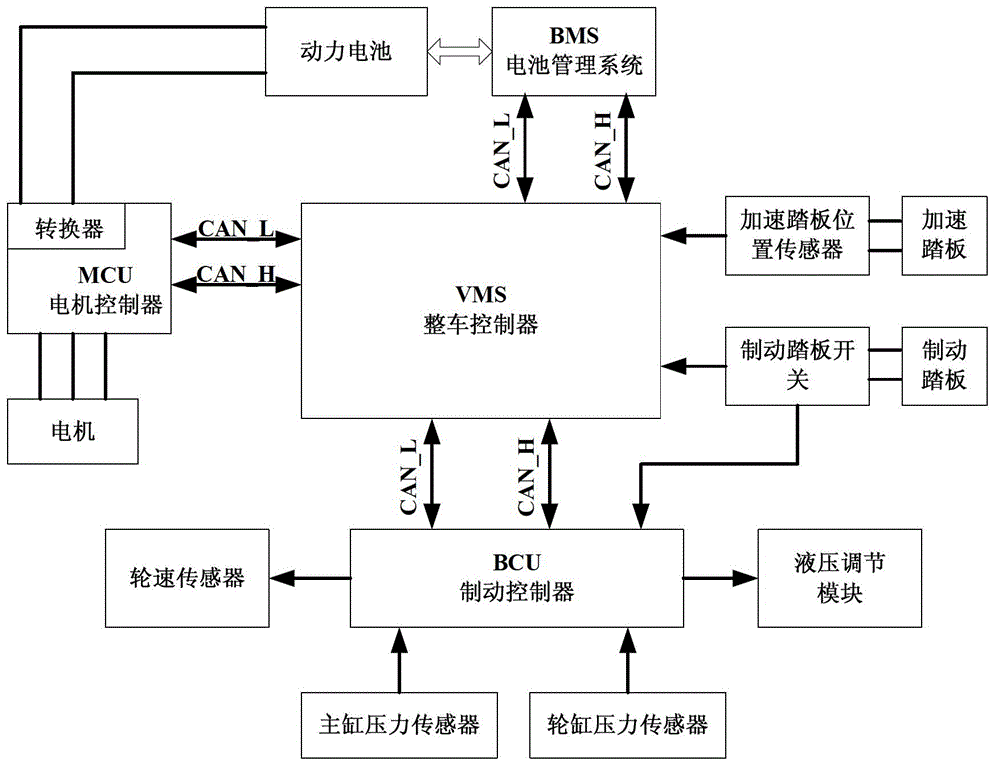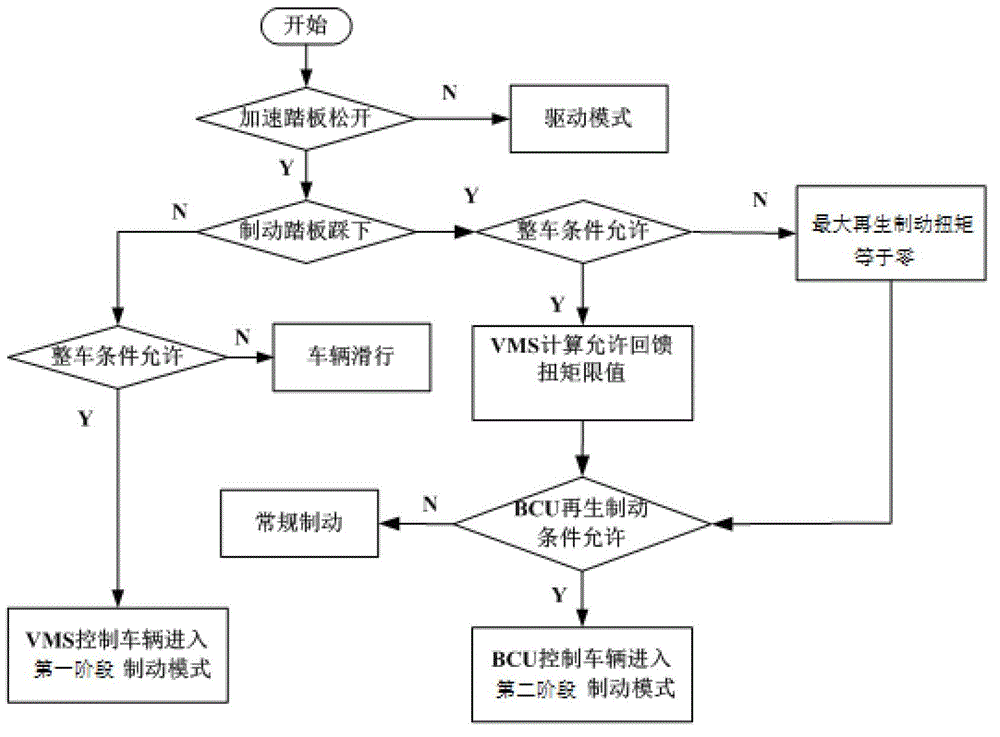Tandem regenerative brake control method
A technology of regenerative braking and braking control, applied in the direction of brakes, electric braking systems, electric vehicles, etc., can solve the problems of low conversion efficiency and complex structure, and achieve the effect of improving recovery efficiency
- Summary
- Abstract
- Description
- Claims
- Application Information
AI Technical Summary
Problems solved by technology
Method used
Image
Examples
Embodiment
[0026] Example: such as figure 1 As shown in the figure, BMS is the battery management system, MCU is the motor controller, VMS is the vehicle controller, and BCU is the brake controller. The BMS monitors the current state of the power battery in real time, calculates the maximum charging and discharging current allowed to ensure the safety of the vehicle; the MCU controls the operation of the motor, executes the torque requested by the VMS, and feeds back the state of the motor; the VMS is in the BMS, MCU and BCU It acts as a bridge between them, and it communicates with the three controllers through the CAN bus (CAN_H, CAN_L) to realize information exchange. The VMS judges whether the vehicle is currently in a driving state or a braking state by collecting the accelerator pedal position signal and the brake pedal switch signal. When the vehicle is in the driving state, the VMS issues control commands to control the operation of the vehicle. Once the brake pedal is actuated...
PUM
 Login to View More
Login to View More Abstract
Description
Claims
Application Information
 Login to View More
Login to View More - R&D
- Intellectual Property
- Life Sciences
- Materials
- Tech Scout
- Unparalleled Data Quality
- Higher Quality Content
- 60% Fewer Hallucinations
Browse by: Latest US Patents, China's latest patents, Technical Efficacy Thesaurus, Application Domain, Technology Topic, Popular Technical Reports.
© 2025 PatSnap. All rights reserved.Legal|Privacy policy|Modern Slavery Act Transparency Statement|Sitemap|About US| Contact US: help@patsnap.com



